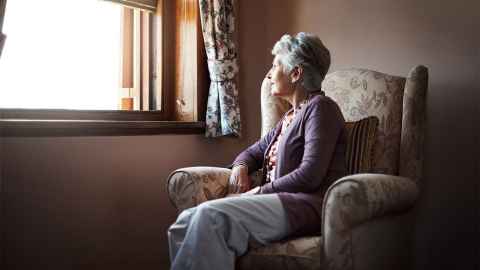Retirement village life: lonely for some
8 September 2020
Opinion: Living in a retirement village does not guarantee protection from loneliness. A study has revealed 39 percent of residents report some level of loneliness.

In recent years there has been a growing awareness of the negative impact of social isolation and loneliness on people as they age. These are now recognised as predictors of physical, functional, and mental health decline and may cause anxiety, depression, cognitive decline, chronic diseases, as well as increase the risk of early death.
Contrary to expectations, living in a retirement village does not guarantee protection. In a recent study, 39 percent of retirement village residents in New Zealand reported some level of loneliness.
Social participation and community integration are key to the well-being of older people, whether they live independently or in a retirement village. Retirement villages across New Zealand reacted quickly to the threat of Covid-19, with many socially isolating up to two weeks before the rest of the country and putting procedures in place to ensure the health and safety of their residents.
At a time when families and friends could not offer their parent or family member physical support and comfort, staff at retirement villages and rest homes did an admirable job by providing care and social support, often going beyond their normal practices, with some even moving into their workplace full time in order not to burst bubbles.
However, we know little about the significant challenges that less privileged older people must have experienced while living alone in these communities.
Despite the commendable efforts of staff caring for residents during the lockdown, social isolation and loneliness have been problems in these communities long before the current pandemic. The profound impact of the social disconnect caused by Covid-19 will have exacerbated existing health consequences for many residents who were already experiencing loneliness and social isolation.
Moving to a retirement village and establishing new friendships and routines can be challenging for many people. In our study we found residents reported similar, and in some cases higher, levels of loneliness and isolation to those living independently in the community.
While many residents enjoy the social benefits of living in a retirement village, our studies reveal that although retirement villages market ‘pre-existing communities’, social interactions within retirement villages do not alleviate loneliness and isolation for everyone. Being exposed to a social network does not guarantee close relationships, and retirement villages are only partly able to address residents’ social needs. One resident commented, “we’re independent, so it’s left up to us”.
These findings are particularly unsettling when we consider the added isolation for residents living alone in the communities, and that some residents receive few, or no outside visitors.
The availability and perceived ease of accessibility to social contact within a retirement village and the expectation that residents will be able to make close social and emotional connections independently may not be realistic for many, and may provoke increased levels of anxiety and loneliness.
Social engagement does not exist in a vacuum. The residents’ ability to participate in community living is a complex process that reflects the larger contextual factors surrounding them, such as health, shared interests and individual characteristics, as well as the physical environments they occupy. This means there is often a balancing act between these factors in order to maintain active, independent living. These benefits are particularly important for residents who face added challenges to their wellbeing and social engagement, such as loss of a spouse or declining health.
Although retirement villages provide social and entertainment opportunities, many activities and social gatherings are largely left up to the residents themselves. Given that positive social experiences and community connections are key to the mental and physical wellbeing of older people, to what degree should the property management ensure this happens for all residents as part of the health care they provide?
Addressing the issues of social isolation and loneliness for residents in retirement villages is more complex than just providing social opportunities and entertainment. Management may consider structuring social environments for their residents in ways that promote and integrate more inclusive social engagement and the building of stronger communities, such as providing staff to support a cross-section of residents by encouraging their access and involvement in a range of social activities.
Concerns over the mental and physical wellbeing of older people highlight the importance of understanding and learning more about community living environments and how they promote, provide access to, and enrich a quality social life for those who live in them.
It is time to reconsider how residents are integrated within the retirement village in a way that elevates isolation and loneliness as important priorities in overall health, regardless of whether they are caused by a pandemic.
Lori Nielson, Associate Professor Michal Boyd, Dr Anneka Anderson, and Associate Professor Janine Wiles are from the Faculty of Medical and Health Sciences.
This article reflects the opinion of the authors and not necessarily the views of the University of Auckland.
Used with permission from Newsroom Retirement village life: lonely for some 8 September 2020.
Media queries
Alison Sims | Research Communications Editor
DDI 09 923 4953
Mob 021 249 0089
Email alison.sims@auckland.ac.nz